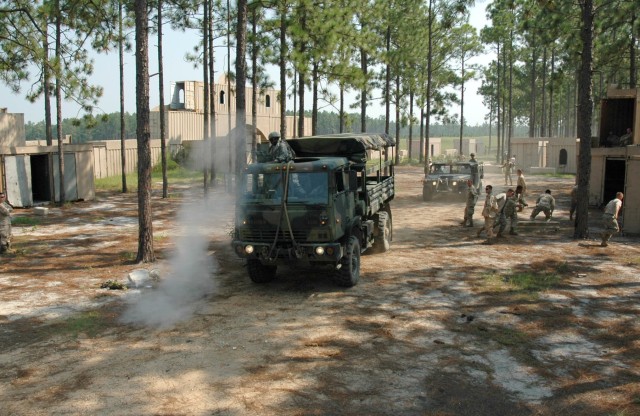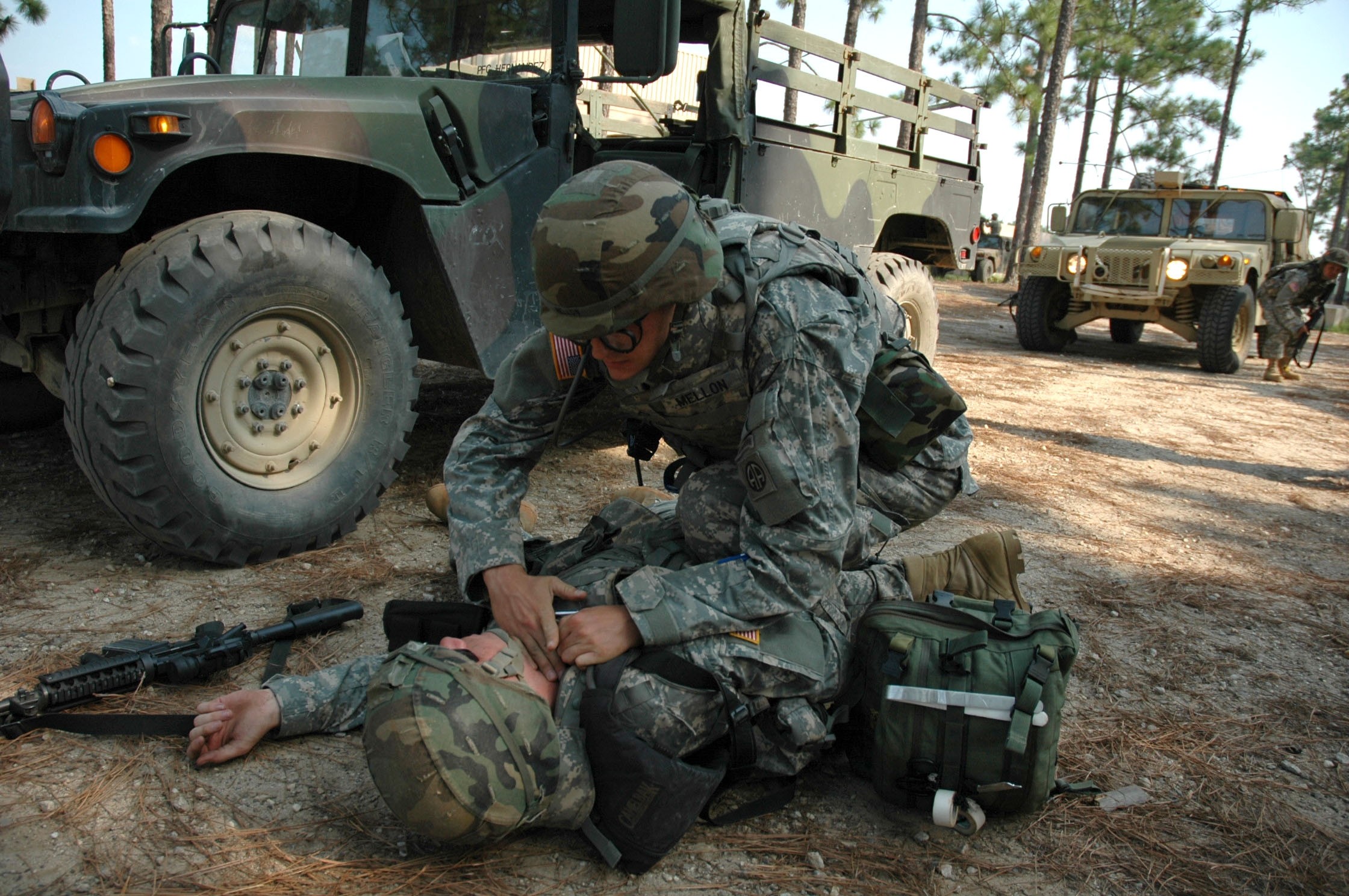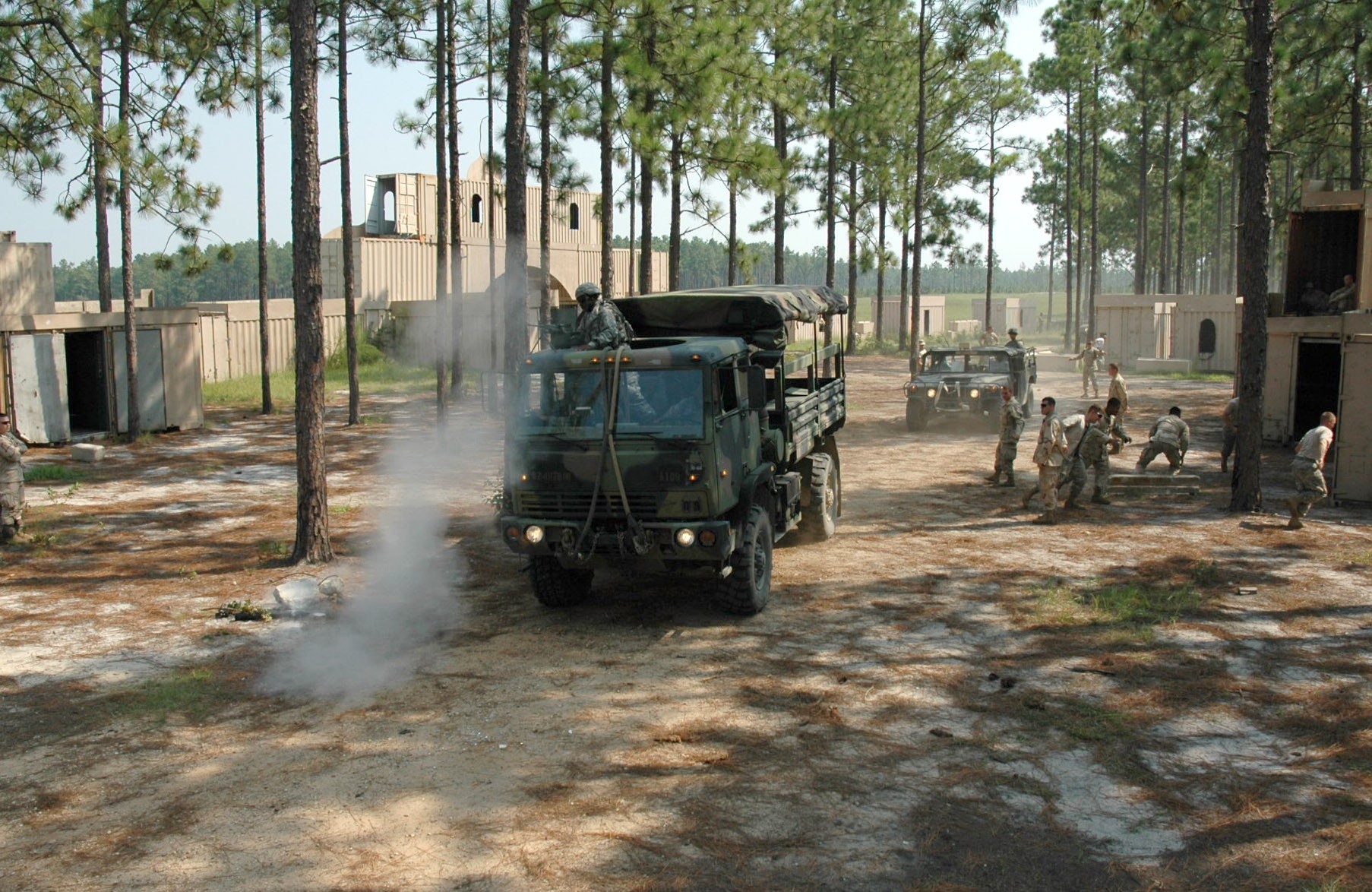Though all the situations were simulated in this case, they show the kinds of dangers support soldiers headed down range have to be prepared for, said Command Sgt. Maj. Barry Maieritsch, the 407th's command sergeant major.<br/><br/>"The one thing about war is that it's predictably unpredictable," Maieritsch said.<br/><br/>Paratroopers from the 407th Brigade Support Battalion, 2nd Brigade Combat Team, 82nd Airborne Division prepared themselves for the unpredictability of combat by conducting a convoy operations situational training exercise here Sep. 7 - 8.<br/><br/>The purpose of the exercise was to test the ability of convoy commanders and their troops to react decisively when confronted with complex, potentially dangerous, or hostile scenarios, said Capt. Jeffrey Lovelace, intelligence officer for 2nd<br/>Battalion, 325th Airborne Infantry Regiment. Lovelace's unit provided the opposition force during the exercise.<br/><br/>Each platoon-sized convoy encountered five scenarios as it maneuvered through the exercise, said Lovelace. They consisted of two different checkpoints, a confrontation with a throng of angry protestors on the road, a hasty ambush, and,<br/>finally, an IED detonation followed by a deliberate ambush with small arms fire.<br/><br/>At every event, the outcome - and the danger - was variable depending on the actions taken by the convoy commander.<br/><br/>"We kind of make them think through the problem. There's not necessarily a right answer," Lovelace said.<br/><br/>All the scenarios were drawn from lessons learned in Iraq and Afghanistan that pertain to situations a support unit would be likely to encounter.<br/><br/>"This is what they're going to be doing (on a deployment)," said Lovelace. "They're going to have to face these situations."<br/><br/>The most complex situation was the deliberate ambush coupled with an IED strike. This portion of the exercise took place inside Freedom Village, a training area constructed out of recycled shipping containers and designed to resemble a mid<br/>sized Iraqi or Afghan village. The village's population was played by out-of-uniform paratroopers from the 2nd Bn., 325th AIR.<br/><br/>The iterations all began similarly, though each convoy commander reacted differently. As the first vehicles went through, a simulated explosion went off, scattering the civilians walking through the streets indoors and bringing the column of<br/>vehicles to a halt. Gunfire began erupting from windows, roof tops and doorways as soldiers playing insurgents fired blanks at the exposed convoy.<br/><br/>Amid all the chaos, commanders had to get status reports, call in the quick reaction force, treat casualties, and have their disabled vehicle towed out of the kill zone, all while laying down suppressive fire on the attackers.<br/><br/>Even when the enemy fighters were "dead" they were still dangerous. At one point, a paratrooper inside a vehicle was able to kill two insurgents who were rushing him. Minutes later, a civilian approached the insurgents' bodies, crying and<br/>weeping. The paratrooper ignored him. When his back was turned, the "grief-stricken" civilian pulled out an M4 and fired it point blank at the paratrooper.<br/><br/>Capt. Priscilla Smoot, commander, A Co, 407th BSB, said such surprises were good because they helped her troopers adapt their battle drills to the latest tactics insurgents are using.<br/><br/>"We're always refining our battle drills. It's a constant thing," Smoot said.<br/><br/>Smoot said she saw great improvement in her troopers' performance over the course of the exercise.<br/><br/>"Some of my guys have never been in a convoy, so they're learning a lot from the experience," she said.<br/><br/>Pfc. Andrew Mellon, a medic with C Co, said he also gained a lot from the training.<br/><br/>"The second time we went through we moved a lot faster and had much better communication," Mellon said.<br/><br/>Maieritsch said any problems his troopers encountered during the exercise would only make them more capable and more proficient at their warrior skills in the future.<br/><br/>"There's no greater way of learning that I know of than to get your butt kicked and make mistakes," he said.
2nd Brigade Combat Team conducts convoy training
By Sgt. Mike Pryor, 2nd BCT PAO, 82nd Abn. Div.September 15, 2006






Social Sharing